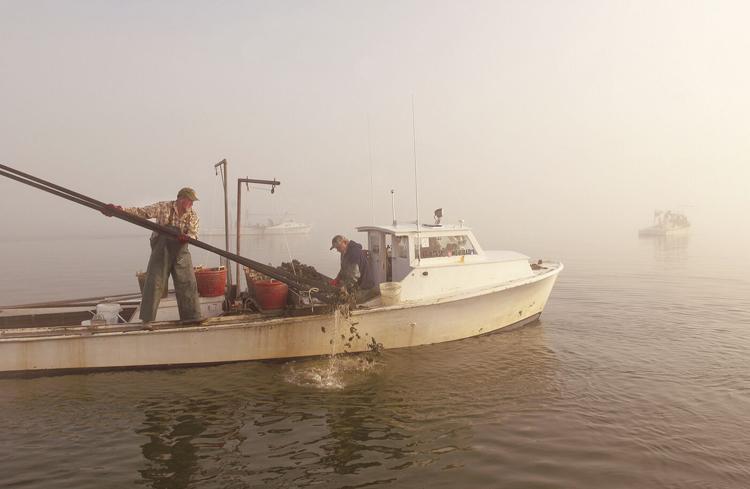By Captain Robert Newberry
Delmarva Fisheries Association
The headline in a recent newspaper article on Maryland’s wild oyster harvest said it was the largest since 1987; the headline ended with a question – “Can it be sustained?”
That’s a valid question for which the answer could be and should be a resounding YES.
To keep things in perspective one needs to look at history.
In 1987, there were approximately 400 more watermen and waterwomen active in that fishery. State regulations on bushel limits were higher. Harvest areas were not restricted (i.e., off limits as sanctuaries), and 50% of the most productive Bay bottom was available.Fast forward to now where 932 watermen and waterwomen harvested over 525,000 bushels with less effort, lower bushel limits, and with the population of markets, small oysters and spat is at a record high even though the watermen and waterwomen are allowed to work on 50% less bottom. These most recent numbers all point to a sustainable oyster recovery.
Despite this most recent good news on oyster harvest numbers, some individuals and some organizations continue to suggest harvest numbers may again decline precipitously and further suggest overharvesting by watermen and waterwomen could be the reason if that occurs. That suggestion is insulting to all watermen and waterwomen. Individually and collectively. Watermen and waterwomen have been and are strong supporters of restoring and maintaining oysters in wild fisheries as their very livelihood and way of life depends on sustainable numbers.
Blaming the harvesters
That disrespectful suggestion also ignores the fact that Maryland’s Department of Natural Resources (DNR) monitors oyster harvest reports on regular basis and makes appropriate changes to harvest limits as necessary.
The reality is there are other circumstances with regard to the Bay’s never ending cyclical nature of the oyster population. A significant one is disease which is always unpredictable in terms of scope and duration. Another is rain and snow melts above the Conowingo Dam that lead to toxic silt flowing into the Bay from sediment trapped behind the dam. Again, these weather-related events are unpredictable in terms of scope and duration.
One major cause of low oyster numbers north of the Bay Bridges (a cause not even remotely the fault of watermen and waterwomen) is because until very recently there was unwillingness to acknowledge and take necessary steps to address regular and massive untreated wastewater discharges from the Back River and Patapsco wastewater treatment plants in Baltimore County for the region.
One can only hope the long overdue corrective measures that are finally being implemented on this urban pollution will make a difference.
The bottom line is some declines in oyster harvests in the future may be inevitable. There are no guarantees in life, only managed risks. Cyclical ups and downs are the rule, not the exception.
A proposal that is environmentally sound, cost effective, and proven to generate measurable positive results
That said, there is a proposal from the Delmarva Fisheries Association that is environmentally sound, cost effective, and proven to generate measurable positive results that should help flatten the cyclical oyster population curve in the Bay.
This proposal calls for relatively limited dredging of recyclable oyster shells from the Man – O – War Shoal in the upper Chesapeake. Those recycled shells will be used to plant oyster spat, a planting option that has experienced great success.
imely approval of this proposal should not be delayed any longer. Recently the state approved another bay dredging project to free the grounded Ever Green container ship. That approval was done very quickly and without any opposition. There was a sense of urgency to mitigate any negative impact on shipping to and from the Port of Baltimore. Isn’t relatively limited dredging to help oyster recovery in the Bay just as important or even more important than the fast tracked Ever Green dredging project? At DFA we think it is.
While we celebrate the good news on the recent oyster harvest numbers, we renew our call for all the key Bay stakeholders to unite in support of funding for dredging of recyclable oyster shells of the Man – O – War Shoal while simultaneously and aggressively pursuing solutions to other critical Bay water quality challenges.
Captain Newberry is chair of the Delmarva Fisheries Association, Inc. The association represents over 80% of the watermen and waterwomen in our region.







Recent Comments